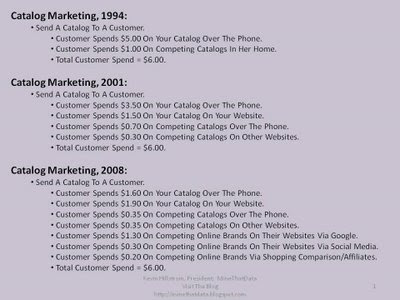Retail And Mass Transfer
 This is the line waiting to get in to the Old Country Buffet in Factoria, WA, on a Friday evening at 7:30pm.
This is the line waiting to get in to the Old Country Buffet in Factoria, WA, on a Friday evening at 7:30pm. Two years ago, you could walk past this dining establishment and you'd be lucky to see twenty patrons dining on a veritable plethora of hot-light heated goodies. Now, you wait fifteen minutes for a table.
In the same mall, there is a specialty apparel retailer. Within ninety seconds of taking this low-res image, I snapped an image of the traffic within this store. Yup, you guessed it --- no traffic
at all. In fact, I didn't see a single employee either --- maybe management read the Sequoia Capital Death Spiral presentation.

The last image is of the Apple store in Bellevue Square. These are products you don't need, and yet, this store is absolutely nuts. And when you walk into the store, it feels vibrant. Plasma monitors telling you where you stand in the queue, recommending you sign up for future Genius consultations online due to the long wait --- tons of employees, yet not nearly enough to handle the throng.

From a Multichannel Forensics standpoint, we're experiencing transfer, actually, mass transfer. As our perception of the world changed, we made immediate changes to our shopping habits. Instead of spending $42 on dinner for two at Chili's, we transferred our loyalty to a $22 dinner for two at the Old Country Buffet. Instead of buying apparel, we hang on to what we already own, but we transfer apparel dollars to music and accessories at the Apple store.
Obviously, we don't have the ability to understand macro-economic transfer (HINT ABACUS & THE CO-OPS --- YOU HAVE THIS CAPABILITY AND COULD CREATE A PRODUCT THAT CAN HELP YOUR CLIENTS UNDERSTAND THIS ACTIVITY!).
But we do have the ability to observe transfer when it comes to the products we sell. It is critically important to analyze how customers are migrating out of expensive items, into inexpensive items --- migrating out of fashion and into staples.
As these trends become evident, we forecast the long-term trajectory of the trends --- capitalizing on the trends without having to fire employees as an expense management best practice.
Labels: Abacus, Apple, Multichannel Forensics, Old Country Buffet, Transfer Mode




